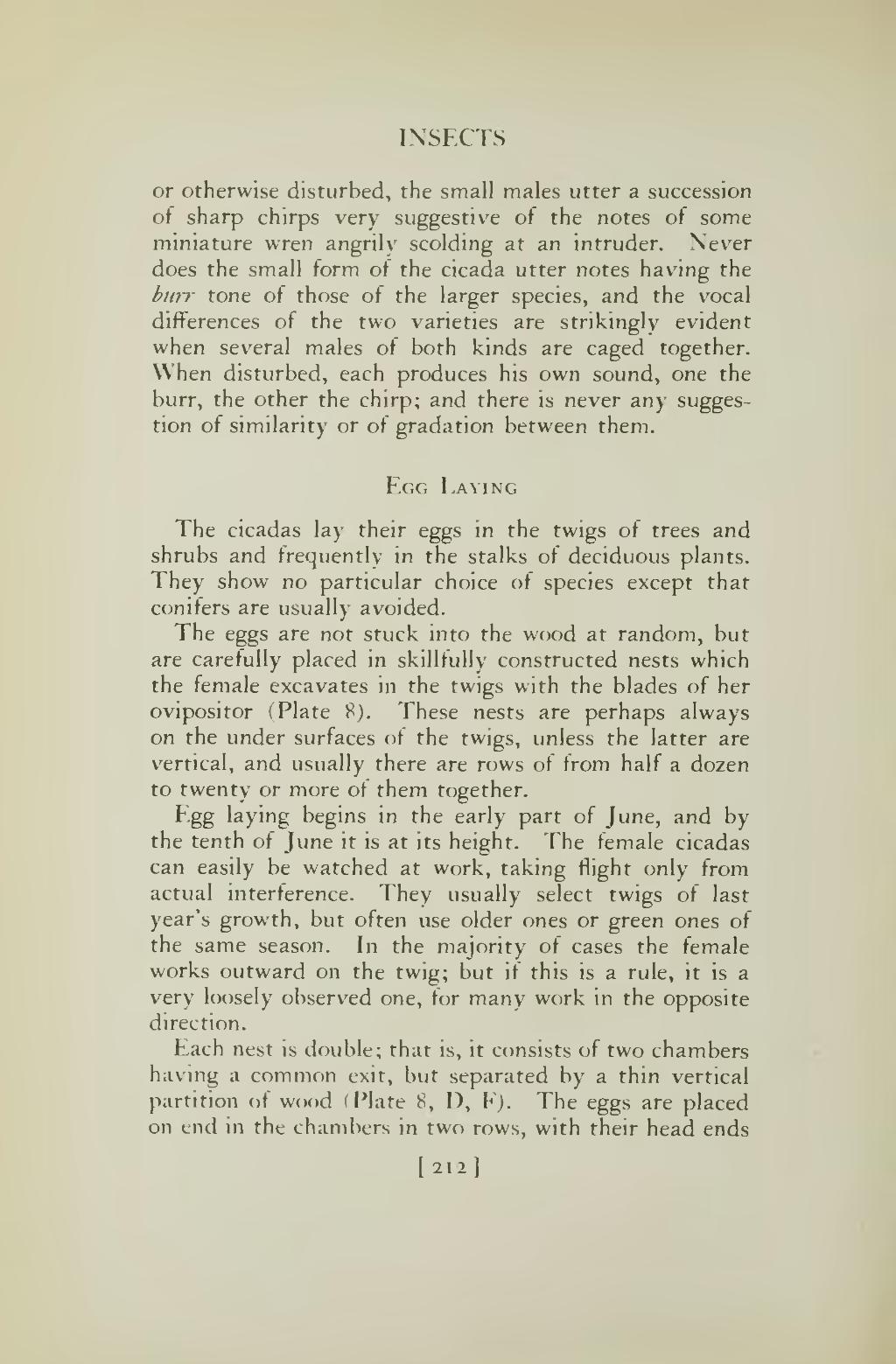NSECTS
or otherwise disturbed, the small males utter a succession of sharp chirps very suggestive of the notes of some miniature wren angrily scolding at an intruder. Never does the small form of the cicada utter notes having the bz«rr tone of those of the larger species, and the vocal differences of the two varietms are strikingly evident when several males of both kinds are caged together. When disturbed, each produces his own sound, one the burr, the other the chirp; and there is never an)" sugges- tion of similarity or of gradation between them.
F, GG |.AY1NG
The cicadas la)" their eggs in the twigs of trees and shrubs and frequently in the stalks of deciduous plants. They show no particular choice of species except that conifers are usually avoided. The eggs are not stuck into the wood at random, but are carefully placed in skillfully constructed nests which the female excavates in the twigs with the blades of her ovipositor (Plate ,q). These nests are perhaps always on the under surfaces of the twigs, unless the latter are vertical, and usually there are rows of from half a dozen to twenty or more of them together. Egg laying begins in the early part of June, and by the tenth of June it is at its height. The female cicadas can easily be watched at work, taking flight only from actual interference. They usually select twigs of last year's growth, but often use older ones or green ones of the same season. |n the majority of cases the female works outward on the twig; but if this is a rule, it is a very loosely observed one, for many work in the opposite direction. Each nest is double; that is, it consists of two chambers having a common exit, but separated by a thin vertical partition off wood /Plate 8, i), ?;. The eggs are placed on end in the chambers in two rows, with their head ends
[9_!2]
I'
